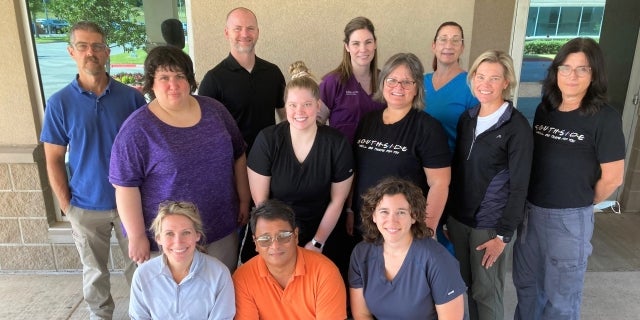
The acute care therapy team at Hillcrest Hospital South team incorporates a myriad of ways to care for patients. But according to Sarah Dyer, physical therapist assistant, the goal remains the same when it comes to the rehabilitation process.
“Scientific studies show that getting people up and moving and participating in their care increases the quality and speed of healing while decreasing length of stay,” Dyer said. “This is why orthopedic patients are out of bed within 24 hours of surgery; why people are up in their chairs for morning face wash and teeth brushing; and why a walk to the bathroom can be some of the best exercise you can get. The therapies are all about getting people of all ages back to living a full and independent life, and it often starts with the seemingly littlest and simplest of tasks.”
The top priority for the team in helping patients get back to their best and most independent selves is by utilizing a particular set of exercises and activities, also known as therapeutic interventions. These interventions are authorized by a care team that include speech-language pathologists (SLPs), occupational therapists (OTs) and physical therapists (PTs) and physical therapist assistants (PTAs).
An SLP works to prevent, assess, diagnose and treat speech, language, social communication, cognitive-communication, and swallowing disorders in children and adults. They are integral to the early progression after a stroke involving aphasia and/or swallowing impairments.
An OT helps people fully engage in their daily lives, from work and recreation to activities of daily living such as self-care, cooking, eating, dressing and driving. In the hospital setting, the OTs and certified occupational therapy assistants are key in the rehabilitation of upper body surgeries or injuries, such as a shoulder replacement.
PTs and PTAs care for individuals whose ability to function is impaired or threatened by disease or injury, with emphasis on the skeletal system, neuromuscular and cardiopulmonary function, as well as balance, endurance and coordination. At Hillcrest South, the PT will be the one to get the patient up and walking after a knee replacement and moving safely after a spinal surgery.
In addition to a variety of available therapies, Dyer said patients also benefit from a collaborative therapy plan tailored to their needs.
“We are an especially tight-knit team with an especially supportive manager,” she said. “We have been able to foster a deep understanding and admiration of each other's unique skills as individual therapists, as well as understand how each of the different disciplines can augment the others. We are quick to call upon each other and will often co-treat in a combined session to further the rehabilitation opportunities offered to patients.”
